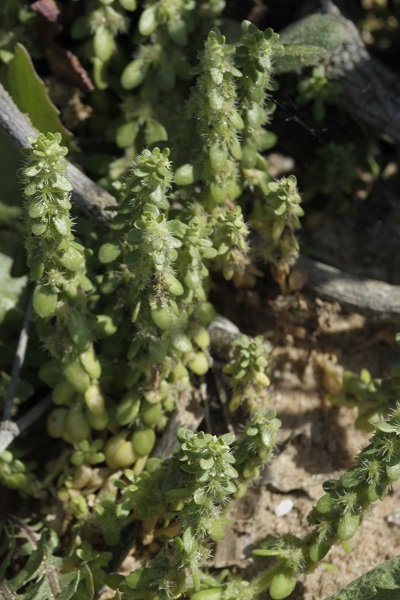Galium vexans,Wall Valantia,
Hebrew: חגוית החומות, Arabic: فلنتية الحيطان
| Scientific name: | Valantia muralis L. | |
| Synonym name: | Aspera muralis (L.) Lowe, Aspera nutans Moench, Galium vexans Rchb.f. | |
| Common name: | Wall Valantia | |
| Hebrew name: | חגוית החומות | |
| Arabic name: | فلنتية الحيطان | |
| Family: | Rubiaceae, madder family, bedstraw family, פואתיים |

|
| Life form: | Therophyte, annual | |
| Stems: | Up to 15cm tall; peduncle and pedicels broadly coa | |
| Leaves: | 3-6.5x2-2.5, obtuse, whorled, peduncle and pedicels with conspicuous dorsal horn; horn and pedicels with hooked bristels | |
| Inflorescence: | whorls of short, axillary 3-flowered cymes; central flower hermaphrodite | |
| Flowers: | Hermaphrodite flower 1-1.6mm, corolla 4-lobed; lateral flowers male, corolla 3-lobed; yellow, green | |
| Fruits / pods: | Mericarps usually 1, 1–1.2 mm, smooth | |
| Flowering Period: | March, April | |
| Habitat: | Mediterranean coast | |
| Distribution: | The Mediterranean Woodlands and Shrublands | |
| Chorotype: | Mediterranean | |
| Summer shedding: | Ephemeral |

Derivation of the botanical name: Valantia , named in honour of Sébastien Vaillant (1669 – 1722), a French botanist. muralis, growing on walls. The Hebrew name: חגווית, the plant vaillantia.
|